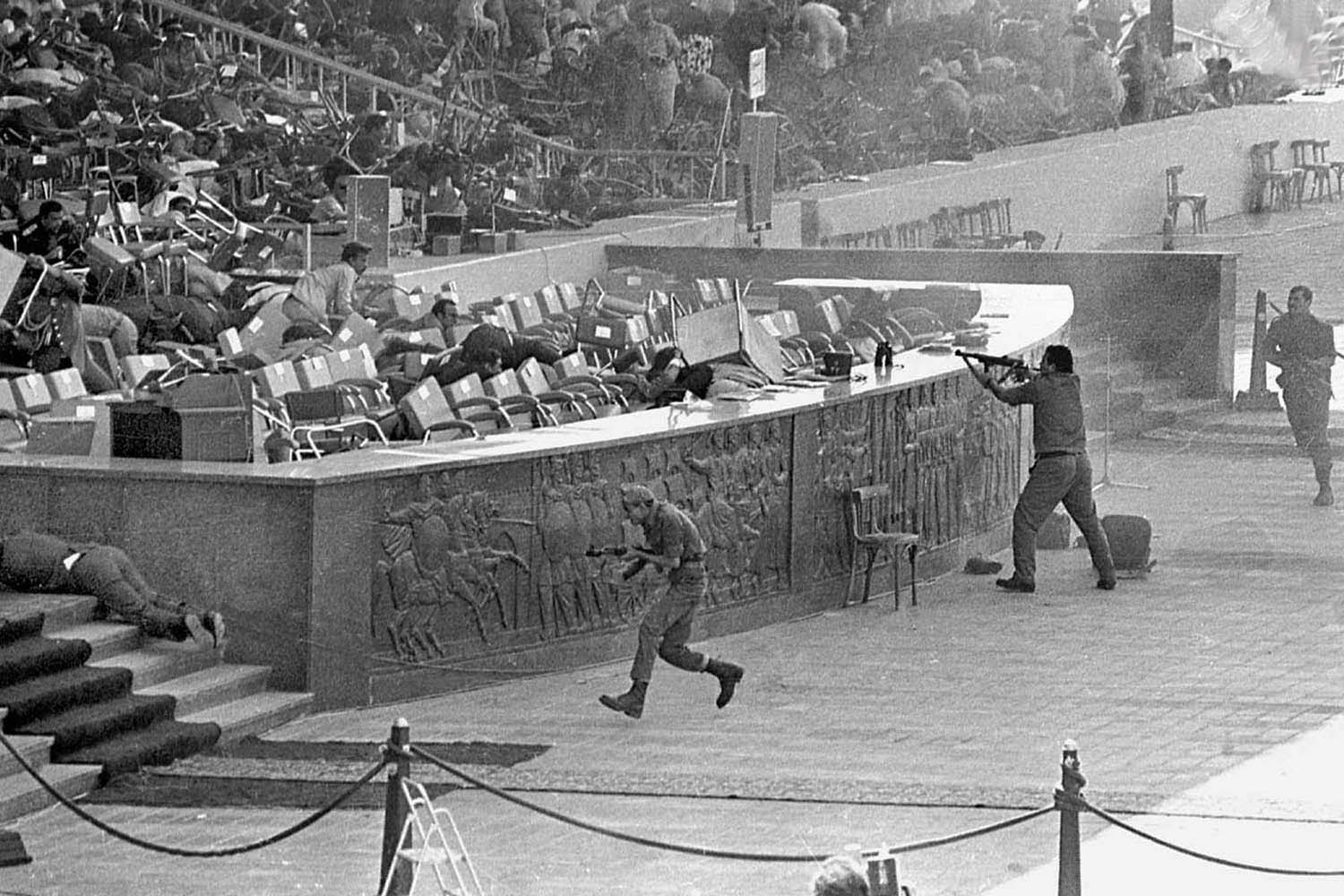Photographs from the assassination of Anwar Sadat, 1981

Assassin's bullets ended the life of a man who earned a reputation for making bold decisions in foreign affairs, a reputation based on his decision in 1977 to travel to make peace at the camp of the enemy of Egypt, Israel Was.
President Sadat was the first Arab leader to recognize the State of Israel since its creation in 1948. In September 1978, he met Israel's Prime Minister Menachem Begin in the United States, where they negotiated a peace deal and a peace treaty in 1979.
For their achievement, the leaders were awarded a joint Nobel Peace Prize. However, Sadat's efforts were not so well received in the Arab world. Arab states boycotted Egypt to break ranks and negotiate a separate treaty with Israel.
On 6 October 1981, a victory parade was held in Cairo to commemorate the eighth anniversary of the crossing of the Suez Canal by Egypt. The Sadat was guarded by four layers of protection and eight bodyguards, and the army's parade had to be protected due to ammunition-seizure regulations.
Egyptian army soldiers and army trucks were carrying artillery as Egyptian Air Force Mirage jets flew overhead, distracting the crowd. One of the trucks was carrying a massacre squad led by Lieutenant Khalid Islambouli. As it passed through the Tribune, Islambouli forced the driver to stop at gunpoint.
From there, the assassins disembarked and Islambouli approached Sadat with three grenades concealed under his helmet. Sadat stood up to take his salute. Anwar's nephew Talat al-Sadat later said: "The president thought the killers were part of the show, when he approached the firing stand, he stood up to salute them".
Islambouli threw all his grenades at Sadat, only one of which exploded (but fell short), and additional assassins rose from the truck, indiscriminately firing AK-47 rifles into the stands until they ran out of ammunition. and then tried to run away. After Sadat fell and fell to the ground, people threw chairs around him to protect him from a hail of bullets.

The attack lasted for about two minutes. Sadat and ten others were killed outright or suffered fatal wounds. Security forces were momentarily stunned but reacted within 45 seconds. One of the attackers was killed, and three others were injured and arrested.
Sadat was taken to a military hospital, where eleven doctors operated on him. He died about two hours after being taken to the hospital. Sadat's cause of death was "acute nerve trauma and internal hemorrhage into the chest cavity, where the left lung and the major blood vessels below it were torn".
In addition to Sadat, eleven others were killed, including the Cuban ambassador, an Omani general, a Coptic Orthodox bishop and the head of Egypt's Central Auditing Agency (CAA), Samir Helmi. Twenty-eight were wounded, including Vice President Hosni Mubarak, Irish Defense Secretary James Tully and four US military liaison officers.
The assassination was carried out by members of Egypt's Islamic Jihad. A fatwa sanctioning the killing was obtained from Omar Abdel-Rahman, who was later convicted in the US for his role in the 1993 World Trade Center bombings. In April 1982, Islambouli and the other killers were tried, found guilty, sentenced to death and executed by firing squad.

No comments: